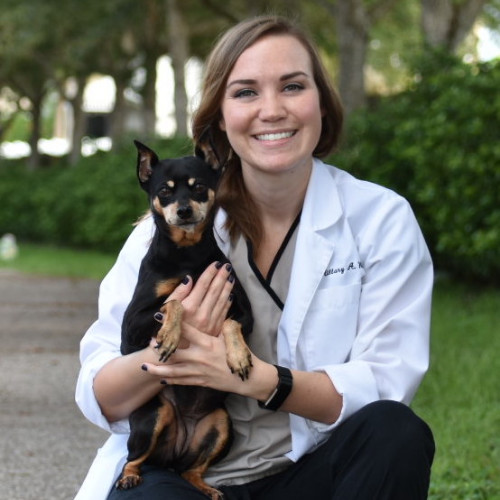Onions are a common and versatile ingredient found in most households, often serving as the base flavor for countless recipes. Given their prevalence, it’s essential for dog owners to understand the potential risk they pose to our canine companions. This article will explore why onions are dangerous for dogs, the variables that influence this danger, signs of onion poisoning, and crucial steps to take in case of potential poisoning.

The Hidden Danger of Onions for Dogs
Onions, along with garlic, leeks, and chives, belong to the Allium family of plants and are toxic to dogs. The culprit is a substance called N-propyl disulfide. This compound can cause oxidative damage to your dog’s red blood cells, leading to hemolytic anemia1 – a condition in which the red blood cells are destroyed faster than the body can produce them, leading to fatigue, weakness, and a host of other health problems. In severe cases, it can cause the cells to burst, leading to potentially life-threatening complications.
Variables Influencing the Danger of Onion Consumption in Dogs
There are several key factors to consider when assessing the risk of onion ingestion for dogs.
- Amount Consumed: The quantity of onion a dog consumes directly influences the severity of potential toxicity. Small amounts might cause mild symptoms, but larger quantities can lead to serious complications. It’s important to note that even small doses eaten regularly can accumulate and lead to chronic toxicity
- Type of Onion: While all onions are dangerous for dogs, some types might contain higher levels of toxic compounds than others. For example, shallots are particularly high in thiosulphates, the substance harmful to dogs. No matter the type – white, yellow, red, sweet, or pearl – all onions should be kept away from your dog.
- Size and Weight of the Dog: A dog’s size and weight also factor into the equation. Larger dogs, due to their size and weight, might be less affected than smaller dogs by the same amount of onion. However, this does not mean that larger dogs are safe from onion toxicity. The impact is relative to size and weight, but the risk is present for all dogs.
- Concentration of Onion in Food: The form of the onion, or how it’s presented in the food, can impact its toxicity. Raw onions are potent and particularly dangerous. But don’t be misled into thinking cooked, powdered, or dehydrated onions are safe. They still contain harmful substances that cause toxicity. Indeed, concentrated forms like onion powder or soup mixes can be even more dangerous due to their high concentration of toxins in a small volume.
Recognizing Onion Poisoning in Dogs- Symptoms to Watch Out For:
- Lethargy: Lethargy or an unusual decrease in activity can be one of the first signs. Your dog may seem uninterested in play, walks, or things they usually enjoy. This happens due to the decreased oxygen-carrying capacity of the blood, resulting from damage to the red blood cells.
- Weakness: Due to hemolytic anemia, your dog may seem noticeably weaker. They might struggle to get up, appear unsteady on their feet, or have trouble jumping onto furniture or into cars. This symptom also stems from the reduced oxygen supply to their muscles.
- Decreased Appetite: A dog experiencing onion poisoning may show a reduced interest in food or stop eating altogether. You might notice them leaving their food untouched or eating significantly less than usual.
- Pale Gums: The gums are a good indicator of your dog’s overall health. Pale, white, or bluish gums are a sign of decreased blood circulation, potentially indicating hemolytic anemia caused by onion toxicity.
- Red or Brown Urine: If your dog’s urine is darker than usual, appearing red or brown, it could be a sign of hemoglobinuria. This condition, in which hemoglobin is present in the urine, occurs when red blood cells are destroyed and their contents spill into the bloodstream.
- Breathlessness: You might notice your dog panting excessively or struggling for breath. This happens because the dog’s body is trying to compensate for the reduced oxygen-carrying capacity of the blood due to the destruction of red blood cells.
Signs of onion toxicity in dogs might not appear immediately after consumption, while others can take several days for symptoms to manifest. These symptoms can indicate a serious health issue, and if you notice any of these or suspect your dog has ingested onion, it’s crucial to contact your veterinarian.
Responding to Potential Onion Poisoning
Regardless of the amount of onion your dog has consumed, any suspicion of onion ingestion should be treated as a potential emergency. Even in cases where a dog has consumed a small piece of onion, it’s still wise to consult with a vet, as smaller dogs can be more affected by minimal amounts. Additionally, recurring, minor exposures can build up toxicity over time.
Never attempt home remedies, such as inducing vomiting, without professional guidance. Incorrectly performed, these can lead to other complications like choking or aspiration pneumonia.
Upon consultation, your vet might decide on a treatment plan based on the amount consumed, the size of your dog, and the time elapsed since ingestion. Treatments can range from inducing vomiting, administering activated charcoal to absorb the toxins, or, in severe cases, a blood transfusion.
What are the most dangerous forms of onion for dogs?
While all types of onions are toxic to dogs due to the substance N-propyl disulfide, their potency can vary. From least to most dangerous:
- Sweet Onions
- White Onions
- Yellow/Brown Onions
- Red Onions
- Shallots
- Onion Powder/Concentrated Onion Soup Mix
Regardless of the type, all onions should be kept away from dogs due to their potential to cause harm.
In Conclusion: Keeping Your Dog Safe from Onion Toxicity
The commonality of onions in our kitchens necessitates vigilance in keeping them away from our pets. As dog owners, understanding the potential risks of onion ingestion, recognizing the signs of onion poisoning, and knowing how to respond can make the difference between life and death for our beloved companions. When it comes to our pets and onions, prevention is always the best course of action. Remember, if your dog ingests an onion, seek veterinary advice immediately. With the right knowledge and immediate action, we can protect our furry friends from the dangers of onion toxicity.
Citations
Concurrent onion poisoning and haematuria in a dog, (1986).
Frequently Asked Questions About Dogs Eating Onions
-
As a general rule, dogs should not have foods containing onion in any form. While some might argue that small amounts are not harmful, it’s better to err on the side of caution. Even foods cooked with onions can contain enough of the toxic compound to harm your pet.
-
Yes, your dog requires medical attention even after consuming a small amount of onion. Even minimal onion ingestion can cause toxicity in dogs, especially in smaller breeds, so it’s crucial to consult with a vet immediately.

